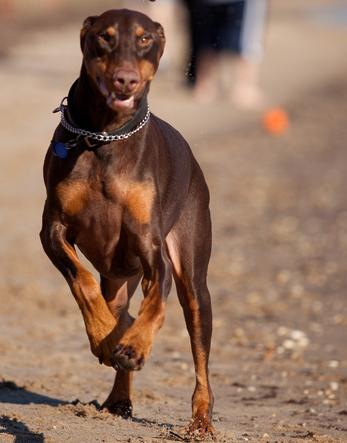By Ed Frawley
Click here to download
Before you begin to read this article I want to point out that I wrote this article back in the 1990’s.
In December of 2005 I finished my 3 1/2 hour training DVD of the same topic. This DVD was 5 years in the making. I have produced over 100 dog training DVD’s and think this may be my best.
The information in this eBook and the DVD is a result of 45 years of experience in training dogs.
Over 30 years of studying the art of protection 

 training and breeding over 350 litters of working
training and breeding over 350 litters of working


 training and breeding over 350 litters of working
training and breeding over 350 litters of working
bloodline German Shepherds.
The information in this article encompasses about 20% of the information in the DVD.
If you have a serious aggression problem with your dog there are two DVDs that you need.
Many people, including experienced dog trainers, misunderstand dominance in dogs.
There are a lot of people who give very bad information (dangerous information) on how to deal with dominant dogs. Some people don’t have a clue how to deal with a dominant dog, others try what I call the HALTY APPROACH (aka the tree hugger approach) while others feel force is the only way to handle the problem.
Some think you just “alpha roll the dog and be done with it.” This is a common approach. In most cases, this is also the wrong approach. In addition, many people think that we should only be concerned with dominance in a large dog and not a small dog - this is also wrong.
While a large dog (like the one in the photo above) can put you in the hospital, a small dog can put your child in the hospital. Dominance of any kind needs to be dealt with and if not eliminated at least controlled in ALL dogs.
I have owned a number of extremely dominant male dogs over the past 40 years. These dogs have forced me to study dominance. I look at dominance in a different way today than I did 20 years ago. I have learned that dominance is often (not always) easier to control by using your brain and controlling the environment the dog is placed in.
No one likes to get bit. I look at the scars on the arms of many of my friends and consider myself lucky. I have never had a serious dog bite, yet I have handled some very dominant aggressive animals. This includes more police dogs than I can remember.
When I ask people about these scars, I always get the same answer: “I made a mistake with that  dog.” Getting “dog bit” comes down to making mistakes in how we handle our dogs in a given situation.
dog.” Getting “dog bit” comes down to making mistakes in how we handle our dogs in a given situation.
 dog.” Getting “dog bit” comes down to making mistakes in how we handle our dogs in a given situation.
dog.” Getting “dog bit” comes down to making mistakes in how we handle our dogs in a given situation.
One of the biggest mistakes new dog owners make is to fail to realize that their family pet is a pack animal. The fact is most dog owners don’t even have a clue what this means, much less understand how strong pack drive is in their family dog. Their lack of understanding of this very important issue is what gets them in trouble.
One of the best ways to start to learn about dominance is to study pack behavior in wolves.
Look at the research done on wolf packs. A wolf pack always has a dominant pair of animals.
Wolves don’t maintain their dominant position by fighting with pack members every day; they do it through subtle means. Body posture and attitude play a major factor in maintaining a dominant pack position.















































